My keynote speech to the Virginia Press Association
The Virginia Press Association (VPA) asked me to be the keynote speaker at their annual conference and awards banquet, held May 4 at the Omni Hotel in Charlottesville, VA. This year’s theme was “Beyond the Fold (Navigating Tomorrow’s News Landscape).”The association was founded in 1881 by the Virginia General Assembly. Current VPA Executive Director Betsy Edwards liked the hopeful tones of my book “Beacons in the Darkness (Hope and Transformation Among America’s Community Newspapers).”
By request here is a lightly edited version of my 40-minute talk. Post-conference updates are denoted by ***. Enjoy.
No place is a place until things are remembered.
Place consists of four elements: natural, built, cultural, and social. American newspapers have chronicled and interpreted sense of place and meaning of place, which is as fragmented now as it has been in decades. I’ve used the thesis of place in the feature and travel stories I wrote for The Chicago Sun-Times, a music documentary, and the books I have written: Midwest supper clubs, Civil Rights and soul food restaurants, and camping across America—when place is displaced. I love regional music, that not far from this place rings through the country music of the Old Crow Medicine Show, the Beach Music of Portsmouth’s own Bill Deal and the Rhondels and Dave Matthews.
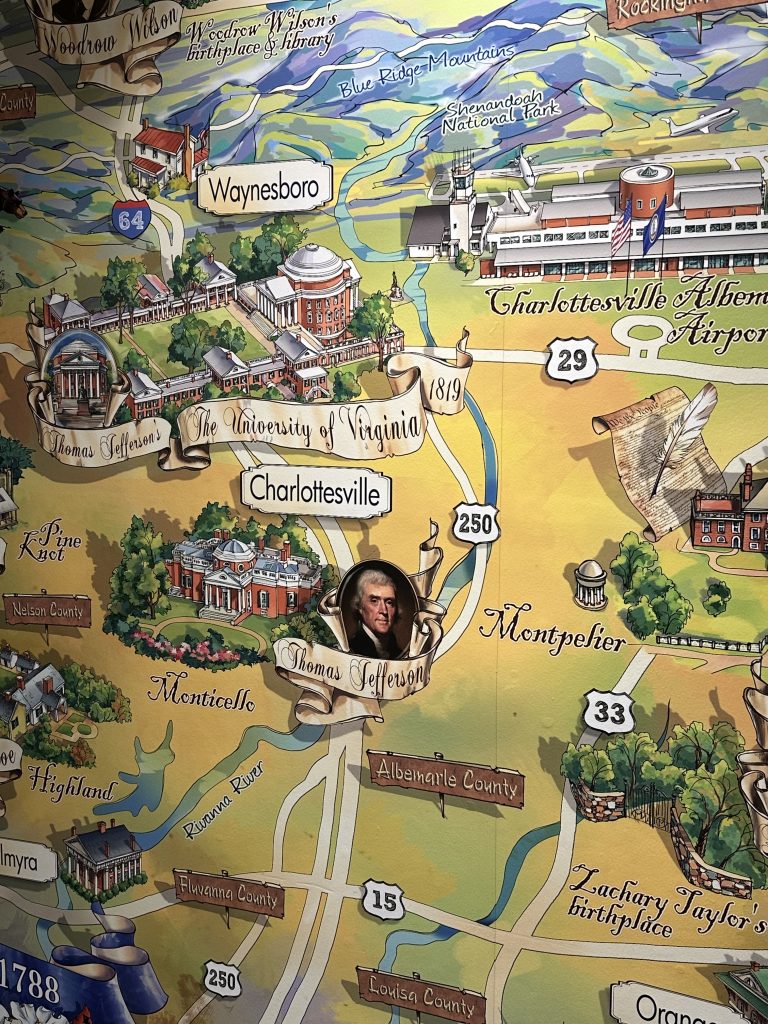
Everyone is affected by their place in history.
And we are all navigating history.
A few years ago I wondered what it would be like to apply the elements of place in my book “Beacons in the Darkness (Hope and Transformation Among America’s Community Newspapers).”
I began research on the book in June 2019. My template was to look at multi-generational family newspapers. I aimed for a celebration of community ties, perseverance, and empathy that is played out in thousands of independent newsrooms in America.
I’ve had at least three points of reflection on this book project: As I was writing–when the book was released– and now looking back at it for the Virginia Press Association (VPA) on the day after World Press Freedom Day.
I’ve reflected on my triumphs and failures in my fifty years of journalism. I started writing for the Copley family-owned Aurora Beacon-News, outside of Chicago, while in high school. I still want to listen and learn. I looked at my subjects for this book with dignity and respect. I recalled a quote from Martin Luther King. Jr. I had heard while researching a previous book, “If I cannot do great things,” he once said, “I can do small things in a great way.” Despite immense challenges, men and women across America’s independent and small-town newspapers were doing just that. They understand that small things matter.
“Beacons” did not have a travel budget (Agate is a fine independent publisher in Evanston, just north of Chicago). But I found my way to visit a feisty weekly newspaper in Eureka Springs, Ark. (where the owners get in a pick-up truck and personally deliver the newspapers through town every Thursday), Ronald Reagan’s Dixon, Illinois, Bakersfield, Ca. where a family publisher blew a whistle on a family member and Carroll, Iowa where the fourth-generation owner Doug Burns told me that he would consider suicide if frustrations became too heavy at his award-winning paper. My book was released in October 2022. Doug came to Chicago for the book release party. On Nov. 30, 2022, the Burns family sold to the Iowa Information Media Group, a conglomeration of publications under the umbrella of another Iowa-based family. Doug is still around, writing the Iowa Mercury online newspaper and contributing to other news sites.
In his April 29 Iowa Mercury post, Doug wrote, “It is painful not to be the publisher of the Carroll Times Herald. I miss it every day. But destiny has me in vital supporting roles for some of the journalists I most admire in Iowa: as I write and promote two essential Iowa media leaders: Lorena Lopez and the estimable La Prensa Spanish Language Newspaper and Dana James, who operates a statewide community newspaper that reminds me much of my family’s paper: Black Iowa News. The connective spirit of Doug’s supportive family model now stretches over the entire state.
The family-owned Journal-News in Hillsboro, Il. became a spirit animal for my project. Hillsboro is about 240 miles south of Chicago. The newspaper is over 170 years old. I visited at least four times and was shadowing the newspaper staff on March 20, 2020, the night normal life shut down because of COVID-19. During one of my get-acquainted interviews, fourth-generation owner John Galer gave me a quote that became something of an elevator line for my project: “If we make a dollar at the end of the year, that’s been a good year.” I never heard that at the Sun-Times.
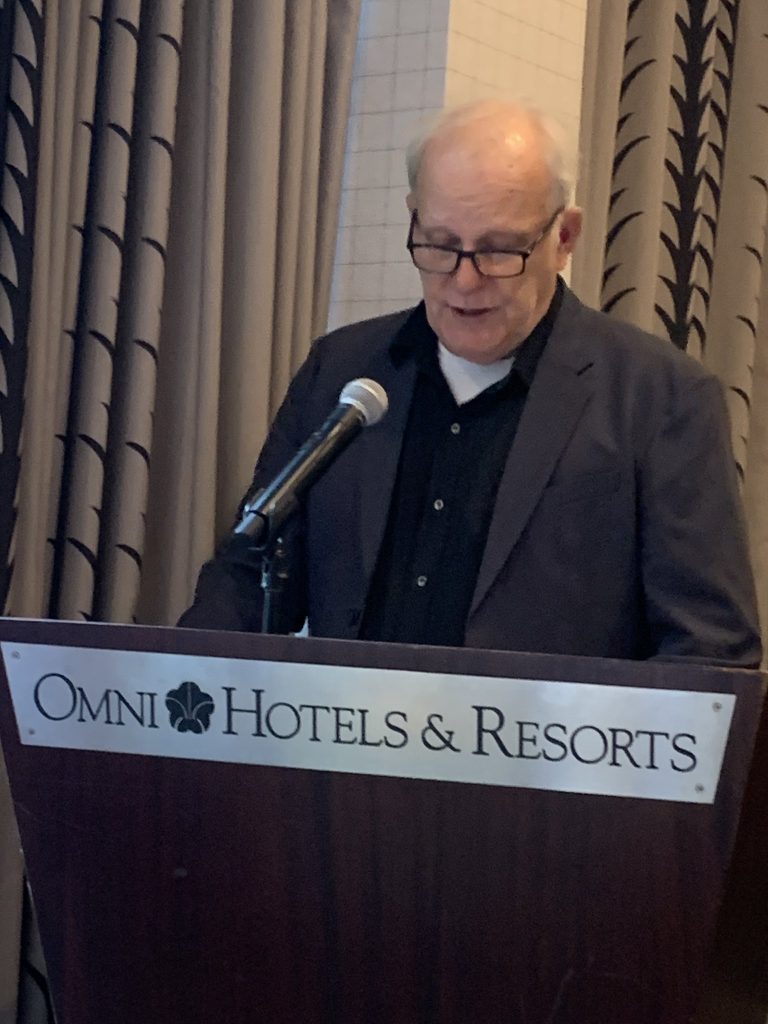
40, 45 minutes is a long time to talk.
It was a thrill to visit the small Hillsboro office located a block from a newly renovated 104-year-old movie theater on Main Street. Writers and editors discussed stories in person. Residents sauntered in with birth announcements and death notices. Local connections were real. By creating a physical point of reference, readers see that having quality news is as important as public education and health care.
The media world has got even more weird since we published “Beacons in the Darkness.” The landscape has continued to splinter and shrink. People float in their ecosystems. I choose to look at a different light. It takes no more time to see the good side of life than to see the bad. That’s a line from former Billboard music journalist Jimmy Buffett. There is an audience for the hopeful path we took in the book.
Newspaper folks in cities of all sizes are fighting myopic perceptions, low wages, inflation, and long hours in the night to create a common good. They move forward. They have to. Go wide or go deep. Or they die. One hope for the future of journalism is to reset the context to a person-to-person model.
This breaks down walls. It reinforces community. Eye-to-eye contact discovers empathy. And empathy leads to the recognition of humanity. A shout-out to the Virginia Press Foundation scholarship winners. This is such an important time in our history to be a journalist. Last year Sarabeth Berman, CEO of the American Journalism Project which funds nonprofit newsrooms said, “It took a generation for the American news industry to unravel, and it will take a generation to fully rebuild it. But real progress is underway.”
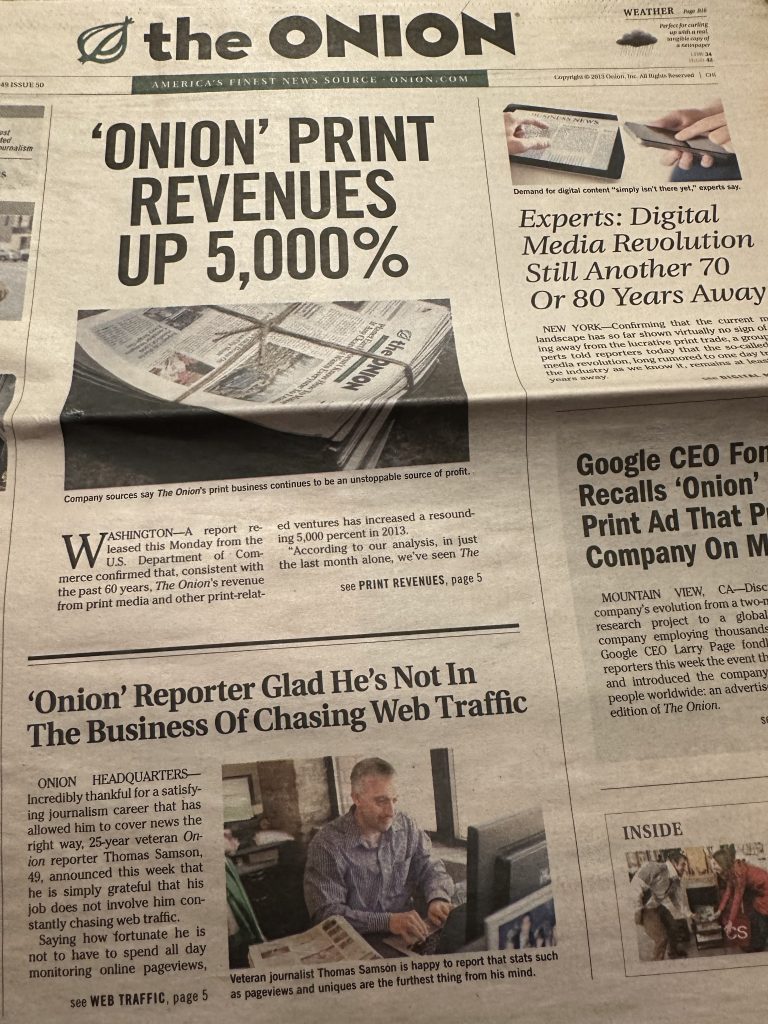
Here are some models from my book that can give us hope and that have resonated with readers. I’ve also included some post-publication updates:
Meshing with the community in Marfa, Tx. (Page 255)
A young husband and wife from Brooklyn, N.Y. bought the Big Bend Sentinel family paper in 2019 and expanded the operation to include a bar, coffee shop, and restaurant. This helps lift the divide between consumers and media. They made the Sentinel a community gathering space. “What would happen if you brought people into a space to talk and exchange information instead of yelling at each other on Facebook?” editor Max Kabat asked me.
I talked to Max again in early March while he was networking at the SXSW music conference in Austin, TX. He said the Big Bend Sentinel had its best year yet in 2023. “The journalism is as good as ever and has been touching the most people since we started,” he said. “Our managing editor left us to become the Senior Editor News and Politics at Texas Monthly. We’ve grown topline revenue by 500 percent since we took over.”
The community center model is still working in Marfa. The newspaper added a bookshop with books about Marfa, design, travel and the aesthetic of the space. They are carrying my book. Marfa is a hip town. I asked if this model could work in other communities. “It totally could,” Max said. “We’re discussing just that at SXSW. It’s about getting out of the local news and information business and into building a brand that builds community. The diversification of revenue is what wins. That’s what’s replicable.”

Portions of the Big Bend Sentinel newspaper office (Provided photos)
Max believed that if local journalism just remains in the news business the conversation will not get beyond the topics of sustainability. But if the industry gets into the local community building business it will give the industry a shot at a healthy future. People want to pay for the experience of being part of something. They’ll spend $7 a day for the feeling that comes with a cup of fancy coffee but they struggle to pay $2 a day to be informed. Building a brand by building community is the most ownable and relevant place for journalism.
I saw this manifest itself in Hillsboro, Ill., the rural community that is not as hip as Marfa. However, the owners of the Journal-News take an active role in recruiting new businesses to town. During one of my early interviews in Hillsboro, publisher Mike Plunkett was wearing an Atlas 46 baseball cap from the Missouri-based company they were trying to recruit. Atlas 46 makes motorcycle bags, vests, and equipment for law enforcement agencies. “The guy who is putting this here employs a hundred people in Fenton Missouri and no one cares,” Plunkett told me. “He employs a hundred people in Hillsboro and he’s changing lives.” And Atlas 46 opened up shop on Hillsboro’s Main Street.
These newspapers are placing themselves in a position of opportunity.
Diversification (Page 269 in my book)
Charleston did well by diversifying into hospice care. Shaw Media in Dixon, Il. kicked the tires on car washes, community theater and they almost bought a movie theater in suburban McHenry. One of the Shaws told me, “Diversification is important as a future addendum.”
In February 2021, the Haymarket Beer Co. in Chicago rolled out a limited edition line of “Don’t Stop the Presses” lager that directly benefitted the Chicago Reader, Block Club Chicago, and others. People responded to the physical connection with the newspapers.
Block Club is a popular online neighborhood newspaper in Chicago. The website is based on the small-town neighborhood model. Block Club was launched in June 2018 with three editors-co-founders and five reporters. There is no weekend edition and a limited sports presence. Today Block Club has a full-time staff of 36. As of April, the site was getting 1.5 million unique visits in a city of 2.7 million.
While traditional journalism and features have made Block Club a go-to source with younger readers on Instagram and TikTok, their quirky take on events has garnered them major attention. In July 2019 Block Club broke the story about a five-foot long alligator swimming in a lagoon on the gritty west side of Chicago. Block Club was relentless in their coverage of the alligator; they covered the people who came to see it, they had a contest that named it Chance the Snapper (beating out Ruth Gator Ginsberg and Croc Obama) and they even sold “Gator Watch” tee shirts for $25. “We sold 4,000 tee shirts which funded a new reporter,” said Block Club Publisher and co-founder Shamus Toomey. This was another creative way to connect with the community.
Ogden Newspapers in Wheeling, West Virginia is one of the top twenty largest newspaper companies in America. They owned 40 dailies in the spring of 2020. They also own ski resorts and the Pittsburgh Pirates baseball team. Fourth-generation Ogden CEO Robert Nutting is principal owner of the Pirates. Long-suffering Pirates fans have tagged Nutting with the unfortunate saying, “Spend Nutting, Win Nutting.” In the summer of 2020, Poynter reported that Ogden had layoffs and furloughs companywide due to COVID-19.
Outlier Media in Detroit.
“Service journalism.” They contend that local news needs to be built from the ground up. Especially during the pandemic, Outlier in Detroit sent text messages to residents that helped them deal with gas bills and vaccinations., for example. In March, the Association of Media of Information and Communication awarded Outlier its inaugural International Award for Local Media at its awards ceremony in Barcelona, Spain. The jury highlighted the newsroom’s diverse, woman-led staff.
I’m working on a project chronicling the history of Chicago photographers. One award-winning photographer has shot for the Chicago Reader, New York Times, Chicago Tribune, and other publications. He breaks the traditional barriers between journalist and subject.
Earlier this year he told me, “You can’t be judgmental. But objective, no. In some cases, I’m even an advocate. In order to get their stories and photograph them you have to build trust. I take graduate students out and they are from Medill (at Northwestern.) They try to listen to what their instructors are telling them and weigh that against what I’m showing them. Because I’m showing them people that are obviously breaking the law but I’m trusted enough to go into their situation. I have to trust them to be able to not break those boundaries for me. If someone from Medill is working on a story I take them in the field and make sure they are safe. The last person I took out, she was working on a story about public toilets and the homeless. The lack of sanitation in encampments. It’s not going to hurt anybody but it’s very important in the world of the homeless.”
Along with….
Advocates for voting rights and community (Wired magazine, Nov. 2022). Tara McGowan is the 36-year-old CEO of Good Information, a network of progressive news sites (called Courier Newsroom) across the United States. She is a political operative turned publisher. In politics she believed in circulating news through ad platforms to influence political thinking. For the Courier Newsroom, she deployed Facebook’s ad-targeting tools. In three years Courier has spent at least $5 million on Facebook and Instagram ads alone.
A passage in the last quarter of this Wired article hits on a theme of my book:
“She had to build an audience fast if she wanted Courier’s newsrooms to make a mark on the 2022 midterm elections. One obstacle was that Democrats lacked some of the right’s obvious cultural signifiers–being pro-hunting, church going, anti-abortion.
“So her (Courier) editors rely heavily on sense of place. ‘How do you build bridges with people who don’t care about politics? Identity. The right uses cultural identity,” McGowan says. She could do the same. “What is unifying? Sports teams. State pride.”
Her editors learned quickly that they got the most subscribers from local, cultural coverage–not straight politics–so the sites crank out lifestyle stories: the best places to spot rare birds, a ranking of Iowa’s best gas-station breakfast pizzas, a profile of the Black-owned barbecue spot in a tiny North Carolina town that became the only place to eat after a hurricane hit. These are calculated placements. Over the years my point of view has been formed by place.
And, in December 2023 the New York Times celebrated the rebirth of local journalism by asking editors from dozens of profit and nonprofit publications to share some of their best work from 2023. These included the Charlotte Ledger’s report about a Charlotte, N.C.developer that named streets and buildings after “Seinfeld” references, The Food Section, an award-winning online site about food in the American South wrote about how some of the best barbecue in Memphis is served at a gun range and the Indianola Independent Advocate’s story about a Bible at a retirement center that traced how a 318-year-old Scottish family Bible ended up in central Iowa. These are the stories that help define America’s unique sense of place.
You are never too old to think outside the box.
In November 2021 the Tennessee Tribune opened two stores at the Nashville International Airport. The Tribune is the state’s largest minority-owned newspaper. In addition to selling copies of the Tribune, the stores carry goods from 40 local minority vendors. Rosetta Miller-Perry founded the Tribune in 1991 to focus on issues like health, education and voter registration.
She is now 90 years old.
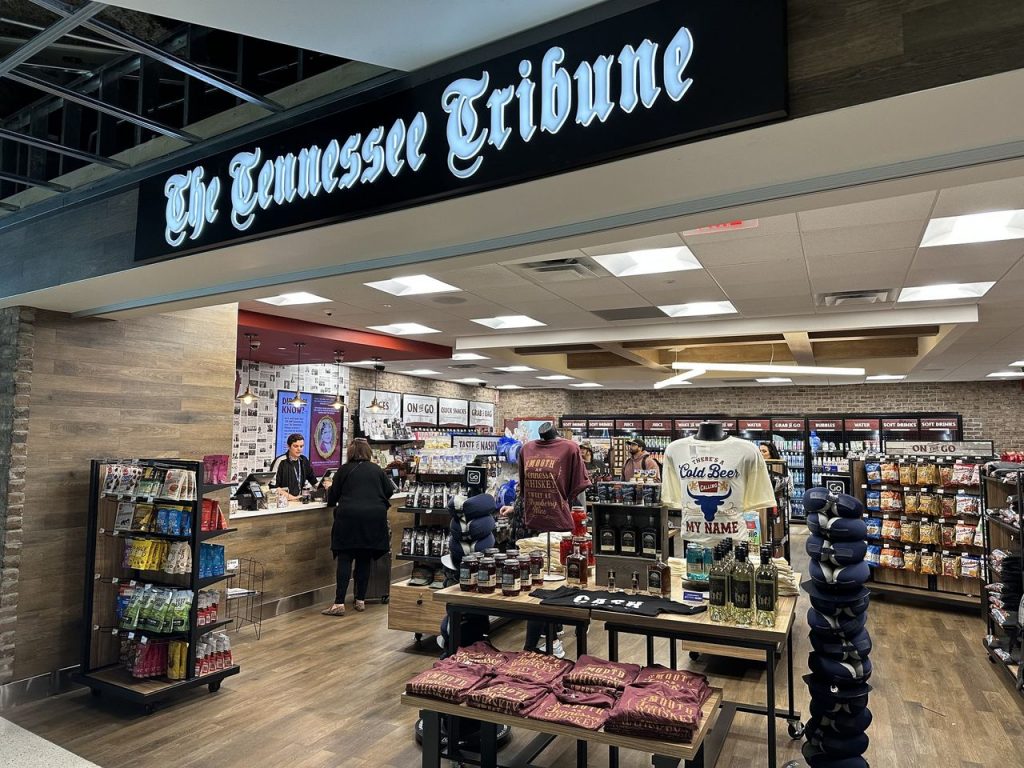
Newspapers at the Nashville airport! (D. Hoekstra photo, 2023)
Headquartered in Nashville, the Tennessee Tribune is the state’s largest minority-owned newspaper with a circulation of more than 150,000. I visited the airport newsstand-store last fall. Besides selling copies of the Tribune, the stores carry items from nearly 40 minority vendors. It’s a brilliant concept. Not only does the Tribune have access to a new audience passing through the airport, there’s local empowerment when travelers buy coffee, popcorn, purses and books from small Black-owned businesses based in Tennessee.
“I always come up with crazy ideas,” said Miller-Perry, who worked closely with Dr. King and the SCLC (Southern Christian Leadership Conference) during the 1960s in Memphis, TN. “It’s difficult for Black newspapers. It is difficult to get advertising. The hip-hop generation doesn’t read newspapers. Many of my readers are non-Black. So you have to have something else. You can’t depend on your newspaper for income.
“And there’s nowhere to put anything for Black folks in Nashville. A lot of people come through that airport. Lots of Black organizations. We sell sweatshirts from (Nashville) Black colleges like Fisk (University) and American Baptist College. The other gift shops were only carrying Vanderbilt. But now they’re carrying Fisk and others. You see?”
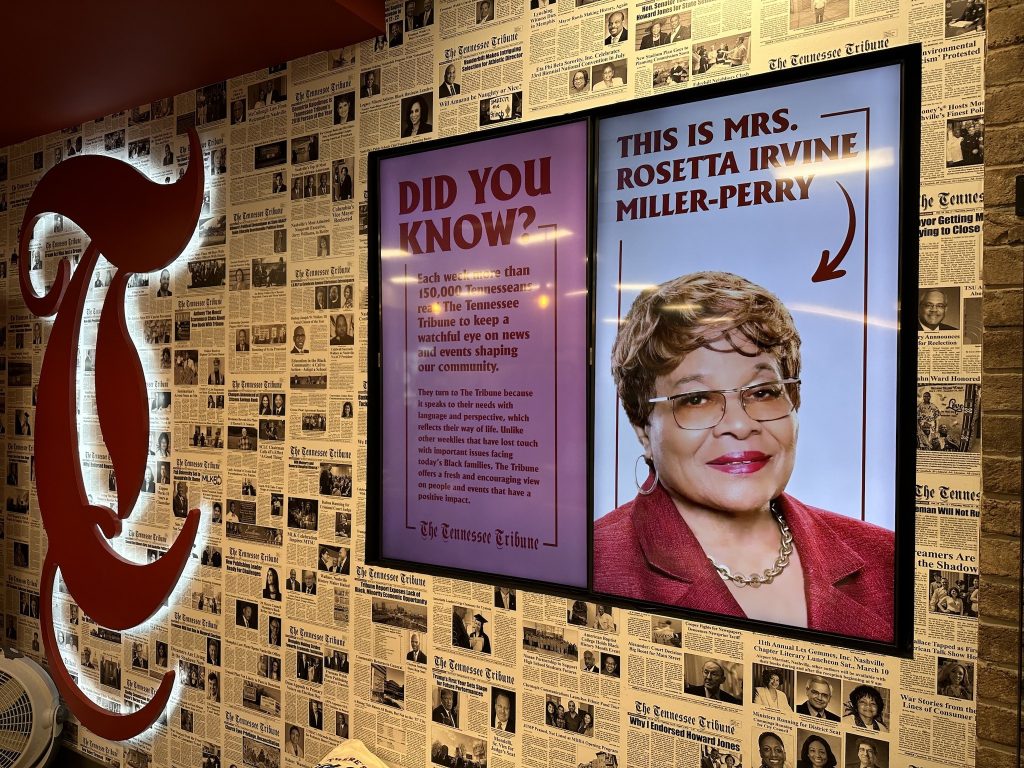
The Tribune comes out every Wednesday. The paper also has an online platform. Miller-Perry launched the Tribune in 1991 to reach an underserved Black audience, especially in the areas of education and voter registration. In the early 1960s Miller-Perry received her B.S. in chemistry from the University of Memphis, becoming one of the first African-American students to graduate from the school.
Taking risks:
Trevor Vernon is the youngest publisher in my book…and the third-generation publisher of the Eldon Advertiser in rural Missouri near the Lake of the Ozarks. Since my book came out he is still taking chances. Some work, some don’t. And he’s okay with that too. He said the lack of stockholders allowed him to experiment. His passion is not going unnoticed.
In January 2020 he became president of the Missouri Press Association. In June 2020 he was elected mayor of Eldon (pop. 3,500.) He turned 40 years old in June 2020.
Vernon deployed News-O-Matic. Sounds like fun. Established in 2013, the News-O-Matic site delivers news, sports, fashion stories, and more to kids daily. By 2021 more than two thousand schools K-8 across America were reading News-O- Matic. The New York-based company partnered with Amazon Free Unlimited to present stories on Audible or podcasts through the Echo Dots Kids Edition.
In September 2023 the Advertiser offices also became an Amazon outpost. “I had a billing-circulation-receptionist with some time and we converted her to an Amazon delivery person,” Vernon told me last month. “We started our second Amazon office in December with the press guys delivering most days. We are trying a screen project, digital TVs with no sound. Local news with local advertising. We have them in bars, gyms, automotive repair. The motion ads are amazing and sponsored content might be a big hit.”
Big Tech and Social Media
One of the most compelling social media stories I found was in Hillsboro. The gentleman who helped lead the team that invented the iPhone retired from Apple at age 43 and left San Francisco to return to his Illinois roots with his wife and family. They reinvested in their home area by renovating and reopening a historic hotel that is now a boutique hotel, brewery, and restaurant. His teenage sons helped the Hillsboro newspaper with their computer systems. All about community—and their kids love reading the local newspaper. There is a physicality and permanence to it, not unlike vinyl.
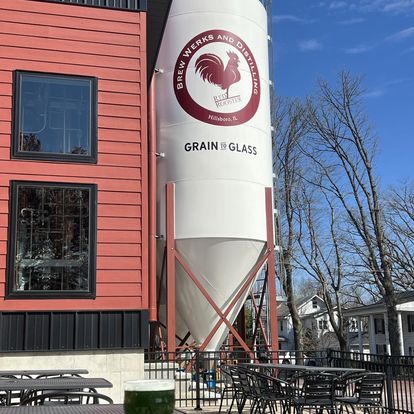
Red Rooster, Hillsboro, IL. (Provided)
The retired Apple guy told me, “It’s funny, living in California, you read Yahoo! News, Apple or whatever. You come back to Hillsboro, and you want to know what’s going on locally. It’s either what is in the local paper or on local radio. They’re talking about things you are interested in. Things about your neighbors. In California, we never considered picking up the newspaper. I still read my news on the phone in the morning, but read the print Journal-News on Monday and Thursday.”
There are a handful of people of color in Hillsboro (pop. 5,800). On May 25, 2020 seventeen-year-old Darnell Frazier made an iPhone video of the fatal George Floyd beating in Minneapolis. She posted the video and it stoked emotions across the world. [In 2021 Frazier won a Pulitzer Prize in the Special Citations category.]
By June 2020 the communities around Hillsboro’s predominately Republican Southern Illinois were organizing Black Lives Matter demonstrations. These rural towns had never seen such activism from young people. “It spread because of the iPhone,” one young organizer told me for my book. “When you don’t see it, you don’t think you need it.” Mike Jenner, University of Missouri School of Journalism Professor added, “Our connection to an event through the power of technology makes the event stronger. A lot of the old school borders that separated Hillsboro, Mount Vernon and other small towns from Chicago, Minneapolis or Palo Alto are being dissolved. That’s a game changer for our society and journalism.”
As recent as 1994 a Ku Klux Klan rally—with people not from Hillsboro—was held on Lincoln Plaza in Hillsboro, anchored by a statue of Abraham Lincoln. The Black Lives Matter rally was on the same plaza.
Sense of place.
In April 2024 Columbia grad student Kelsey Russell became the darling of the print media by telling her 89,000 TikTok followers to read newspapers. She set out to make the newspaper industry “sexy again.” That hadn’t happened since 1976 when Robert Redford and Dustin Hoffman starred in the hit film “All the President’s Men.” Russell, 23, cited the distrust of social media and recommended buying physical newspapers to avoid distractions. She believed media literacy should be taught to young people.
But Kelsey won me over in that “taking risks” category that I saw diminish over my years as shareholders emerged at the Sun-Times. Her biggest tip was “to dip your toe outside of your comfort zone. It’s important to let people know we have to try.” It’s okay to experiment and spitball. Failure is part of life.
*** A couple of days after my speech I received a nice e-mail from Sean Tubbs, President and Producer of Town Crier Productions in Charlottesville. He bought my book but apologized for not having time to open it up. He wrote in part, “I had three intense days of reporting and producing stories. That’s work I get to do because members of the community support me. I don’t have a print product, but my stories have reach. While you were speaking, a story was happening at UVA that harkened back to the community’s most storied moments. That was about two miles away from where we were.”
Tubbs was referencing the 27 people arrested with an alarming use of force on May 4 at the University of Virginia in protests against the Israel-Hamas war in Gaza. And one of the community’s most recent controversial moments was the deadly 2017 white nationalist rally in a park named for Confederate Gen. Robert E Lee and an event that became a dog whistle for Donald Trump.
Tubbs continued, “I was glad to be at an awards dinner where the Daily Progress reporter (Jason Armesto) was on the scene as Virginia State Police pushed out protesters. I had never met him before and was glad to shake his hand. The night was good for setting up local partnerships that have been fallow for a while.” Armesto had been at the VPA conference, covered the protest as I spoke, and later in the evening filed his story from the hallway of the Omni Hotel was the conference was held.
*** After my talk Virginia columnist Laura Hill asked me about writing and sense of place. Hill is the President and Executive Director of the Virginia Racial Healing Institute. In 2023 her column “Building a Bigger Table” won a first-place award from the VPA and her columns for the Virginia Gazette took a second place this year. Judges said her columns “show action rather than simply words.” Here is a sample of her work. Hill is the founder of Coming to the Table—Historic Triangle, a chapter of Coming to the Table, a national racial reconciliation organization. A few days after my chat with Hill, the school board in Shenandoah County, VA voted to restore the names of three Confederate officers to schools in their district, including Stonewall Jackson High.
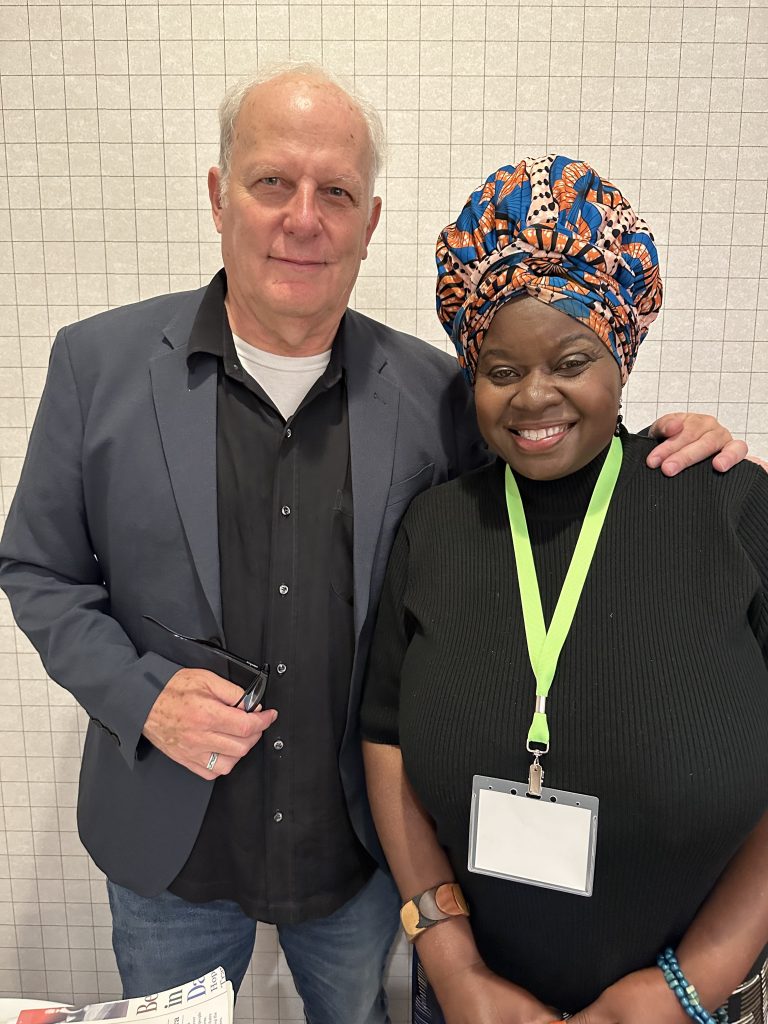
The author and columnist Laura Hill
On the counterpoint, Hill’s desire to show action rather than words (“service journalism”) led to her spearheading an April 2024 community memorial service for Col. Lafayette Jones, Jr. who was instrumental in preserving one of the earliest free Black settlements in the United States.
Jones died in February at age 81. His great-great grandfather was a resident of the Green Springs plantation in Williamsburg which consisted of a self-sustaining community of farmers and artisans more than 60 years before American slavery was abolished. Place runs soul deep in Virginia.
About that nonprofit model. (page 237).
I devoted a chapter to the nonprofit model, which can get messy. The popular phrase is that a nonprofit is a tax status and not a business plan. You still need revenue to pay reporters and in some cases print newspapers.
However, nonprofits are sending out a clear message that they are not owned by a hedge fund looking to squeeze out profits from subscription dollars. “Nobody owns a nonprofit so everyone owns it,” said Block Club’s Toomey, a former colleague at the Sun-Times. “This is not your dad’s newspaper. This is your thing. We’re covering your neighborhood. You give us our stories.”
When it is most accessible, the nonprofit angle is reminiscent of the genuine farm-to-table food movement. Another one of my publisher friends calls it “hope capital.” There are hopeful paths.
*** Two days after my talk, the collaborative Chicago nonprofits City Bureau and Invisible Institute won a Pulitzer Prize in local reporting for their seven-part investigative series on how police mishandling of missing person reports disproportionately impacted Black women and girls in Chicago. The project was spearheaded by two young women. City Bureau’s annual budget is $6 million, and Invisible Institute is $1.5 million according to the Chicago Tribune. Both are mostly funded through foundations. Big things can sprout from small seeds.
One publisher in my book reminded me that you just can’t become a non-profit newspaper. You have to choose a category that the IRS approves. So they organized as an “education institution,” following the format of the Salt Lake City Tribune that in 2019 became the first legacy paper (not a start-up) to be granted nonprofit status by the IRS. Sometimes a foundation will approach a nonprofit newspaper to say they enjoy their environmental coverage and will gift $50,000 to continue environmental coverage.
I-Pad experiment in Arkansas (Page 74 in my book)
The Arkansas Democrat-Gazette is one of the last statewide newspapers in America, serving 75 counties. In May 2019 Publisher Walter Hussman knew his paper was being read on iPads so why not eliminate the newspaper altogether? He first dispatched a team to rural Blytheville (pop. 16,000) and gave away $800 iPads to 200 subscribers. Many residents had not used iPads so the newspaper rented a conference room at the local Holiday Inn and tutored them. One 93-year-old gentleman couldn’t wait to get started. When he went home to fiddle around with his iPad it didn’t work. He called the hotel for tech support. It turned out his house did not have an internet connection. He had never even used a cell phone.
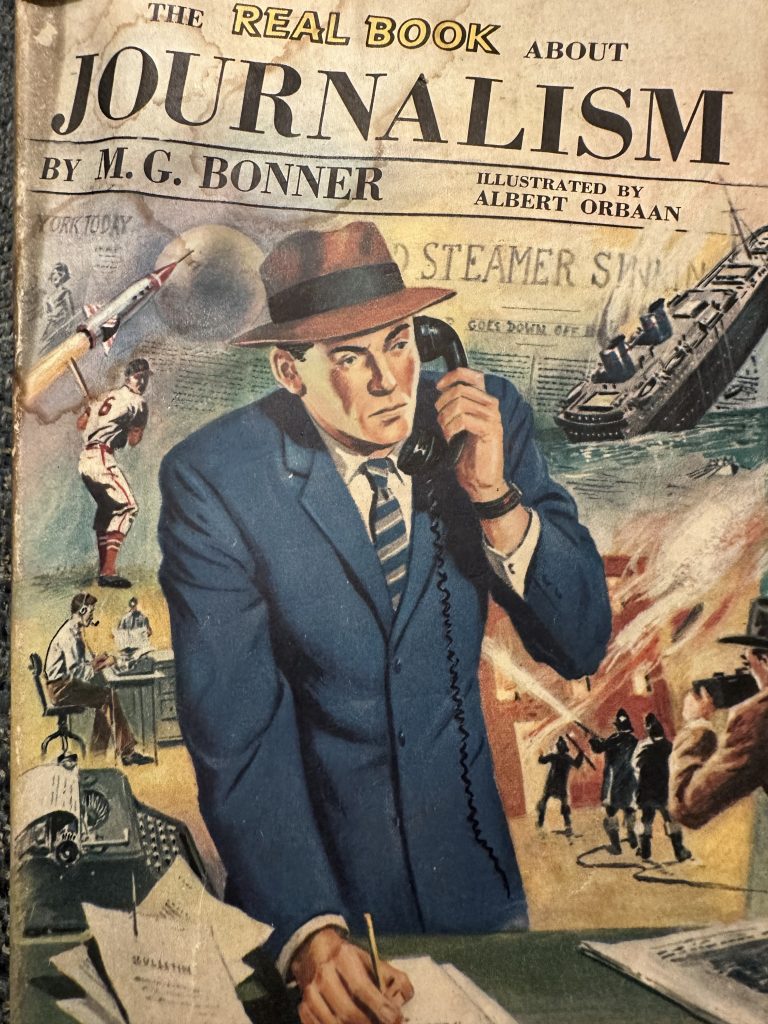
Since my book came out, the Democrat-Gazette moved the rural experiment into Little Rock, where higher than a 70 percent response. The overall percentage for all areas throughout the state was 79 percent conversion. They learned that many women preferred the regular, smaller iPad which would fit into their purses.
Some of the strange decisions I’ve seen management make over my journalism career have given me confidence that the more incongruous road like giving away iPads can be a sustaining path. The worst thing I witnessed in my 30 years at the Sun-Times was in May 2013 when all 28 staff photographers were laid off. Reporters were instructed to take photographs—with no bump in salary. We were told multimedia video platforms would be the next “big thing.” Digital news sites like Buzz Feed News, Jezebel, and Messenger closed in 2023. In early March 2024 Cory Haik, the chief content officer of Vice Media shut down a virtual town hall meeting about layoffs because executives complained about the tsunami of “thumbs-down” emojis that flooded the screen. That’s weird. “It’s a very, very difficult time in the macro landscape, I think you know that,” Haik said.
So what is a connector of these themes?
Adventure with empathy.
Once you begin to understand different voices the result will be a greater landscape in which to experiment. There’s always going to be interesting people doing interesting things and stupid people doing stupid things. Be present in your own life. Live for the now and pay no attention to the rain clouds. It takes passion to stay that course. There are dozens of reasons that newspapers have closed: the internet, advertising going to the internet, cost of newsprint, corporate takeovers upending family roots, and more.
Today’s journalists must be nimble and be able to pivot. Take chances. Take big chances. Don’t be afraid of the dark. “Beacons in the Darkness” honors the onward spirit of the newspaper community. Its essence and soul will never go away because there is always a place for the truth.
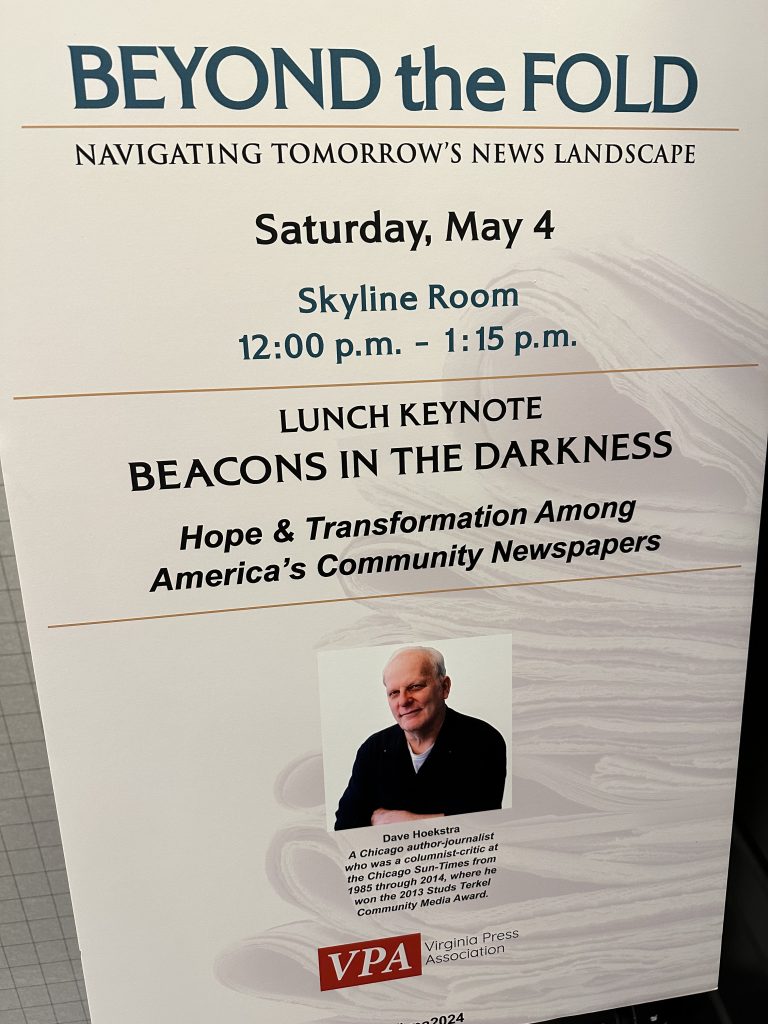

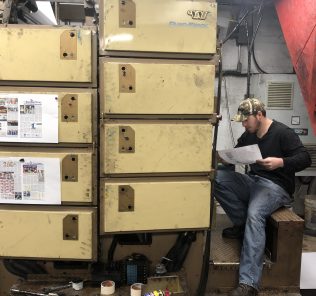


Leave a Response